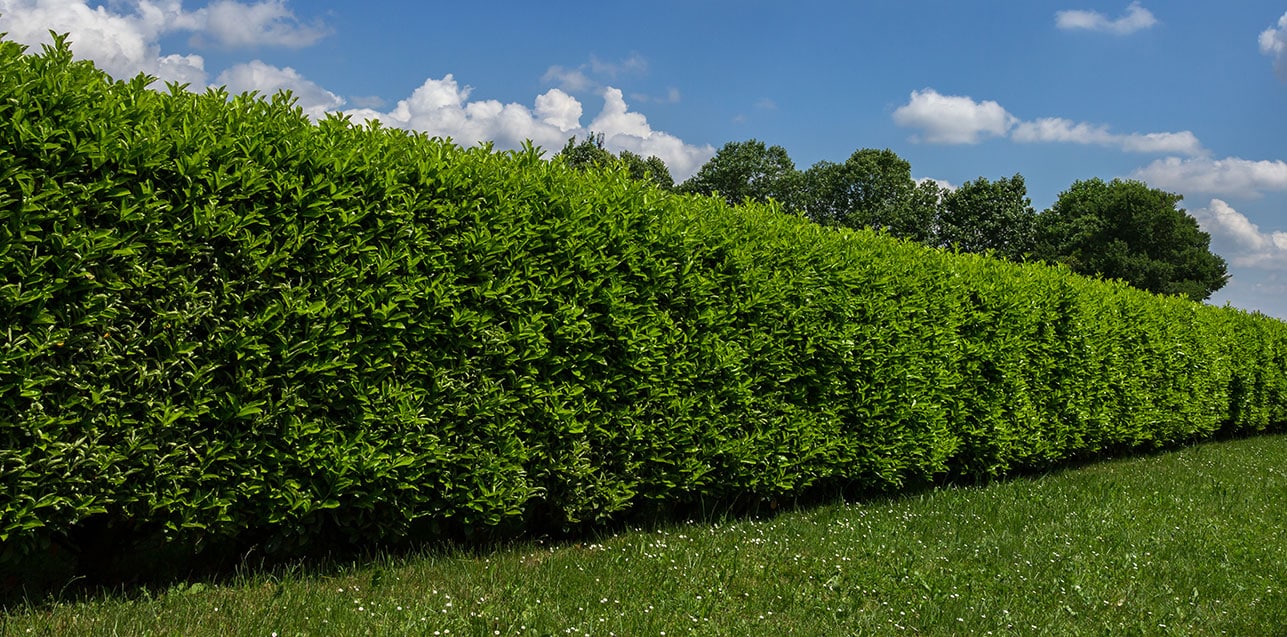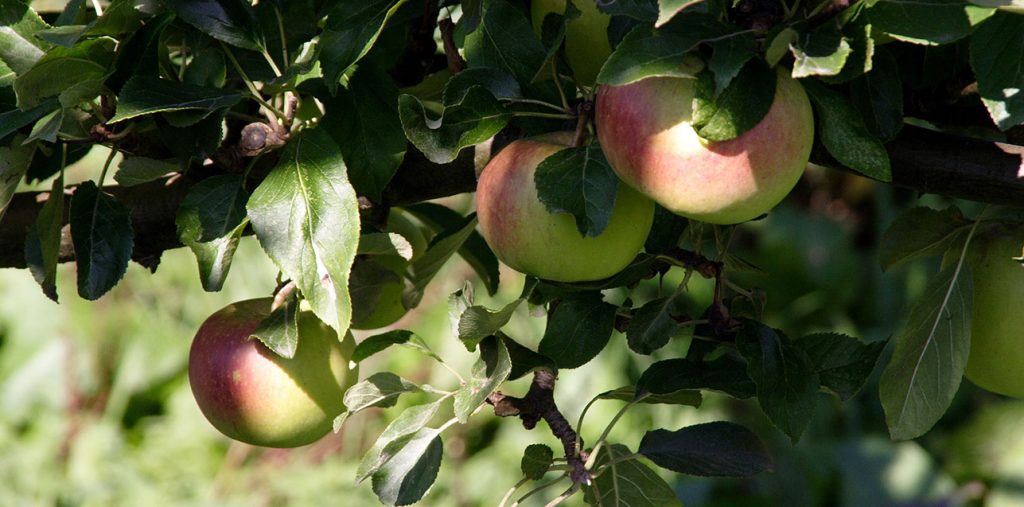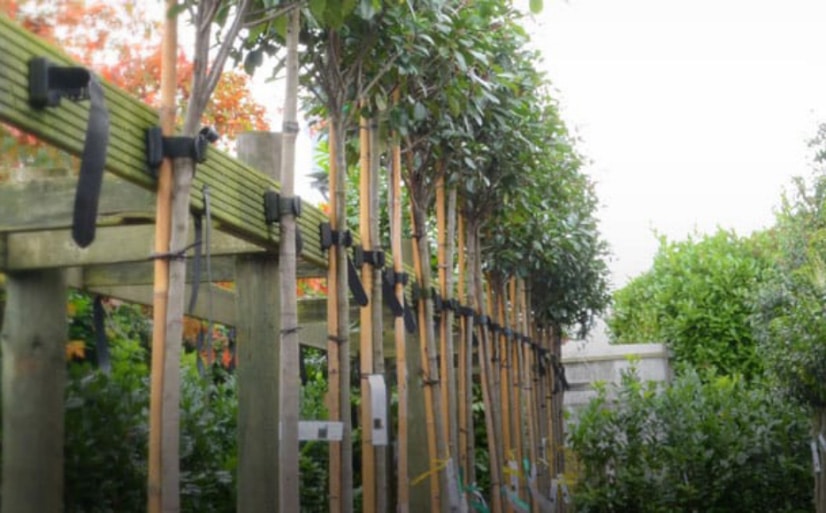Whether you’re looking to add seasonal colour, encourage wildlife, or create a natural defensive barrier, native plants have plenty to offer. Explore our top 10 native hedging plants below to find the perfect fit for you!
1. Common dogwood (Cornus sanguinea)
Common dogwood is a familiar sight in British hedgerows and brings year-round interest to any landscape. It produces clusters of white flowers in spring, followed by dark blue fruits later in the season. Its green leaves turn vibrant shades of yellow, orange, and red in autumn, while green-tinged red stems provide striking colour through autumn and winter. This medium-sized, fast-growing deciduous shrub thrives in most soil types and performs especially well in wetter sites, making it a reliable and versatile choice for native hedging.
2. Field maple (Acer campestre)
Field maple is a hardy, deciduous shrub and one of the toughest native hedging species in the UK. Commonly found in hedgerows, it brings vibrant seasonal colour to any landscape. It is a standout choice in mixed planting schemes, especially when its foliage turns brilliant shades of gold and red. These leaves have a distinctive palmate shape, adding both texture and character. Yet another reason why it’s such a popular choice!
3. Hawthorn (Crataegus monogyna)
Hawthorn has long been a key component in mixed native hedging and field boundaries throughout the UK. This fast-growing, deciduous tree features maple-like leaves, clusters of white flowers in spring, and vibrant red berries in autumn. The berries not only add seasonal interest but also serve as an important food source for birds and other wildlife. Hawthorn also responds well to regular clipping, making it ideal for dense, tidy boundary hedges. Its sharp thorns further enhance its value as a natural, defensive barrier.
4. Blackthorn (Prunus spinosa)
Blackthorn is a tough, native shrub known for both its seasonal interest and natural security. In early spring, it produces small white flowers, followed by oval-shaped green leaves. By autumn, the plant is heavy with blue-black berries, known as sloes, which are edible and often used in preserves or drinks. As its name suggests, Blackthorn is armed with hard, sharp thorns. When clipped into a hedge, it creates a dense, impenetrable barrier, making it an ideal choice for boundary planting and intruder deterrence.
5. Hazel (Corylus avellana)
Hazel is a familiar and versatile feature of British hedgerows. This small, native tree is often coppiced and cultivated for its edible nuts, hazelnuts, which appear in abundance in autumn. Its ability to be easily coppiced makes it ideal for traditional hedgerow management. When cut back, Hazel grows as a multi-stemmed tree, perfect for filling gaps and thickening hedge lines.
6. Dog rose (Rosa canina)
Dog rose is a fast-growing, native shrub. Often seen in British mixed hedgerows, it is a great choice for gardens that support biodiversity.
In spring, it produces large pink or white flowers with a sweet scent. Bees and butterflies love these blooms. By autumn, bright red hips appear and add vibrant colour. Birds feed on the hips through the colder months. Dog rose also grows long, arching branches covered in sharp thorns. These create a natural barrier and help keep out unwanted visitors.
7. Hornbeam (Carpinus betulus)
Hornbeam is widely planted across the UK. Known for thriving in clay soils, but growing well in others too, gardeners often use its full form to create structure and screening. You can plant it as a specimen tree or shape it into a striking hedge. As a native species, it also plays a key role in British woodlands and landscapes.
Hornbeam has the added benefit of being ‘semi-evergreen’. Its bright-green, ovate leaves turn orange-brown in autumn. Many of them stay on the tree well into winter, adding seasonal interest and shelter for wildlife.
Spindleberry (Euonymus europaeus)
Spindle is a fantastic plant for autumn interest. It has small red fruits that split open to reveal vivid orange seeds. This striking display brings colour and contrast to any garden. It also has mid-green leaves that turn brilliant red in autumn. The combination of red foliage and bright fruits makes it especially eye-catching. Spindle is a fast-growing, deciduous shrub or small tree. It grows well on all free-draining soils and thrives on chalk. Once established, it’s a very tough and reliable plant.
Common buckthorn (Rhamnus cathartica)
Common buckthorn forms dense, thorny thickets that are hard to penetrate. These provide excellent shelter for a wide range of wildlife. In spring, it produces small yellow-green flowers. By autumn, red berries appear and ripen to black. Its oval, dark green leaves are glossy and turn yellow before they fall. Buckthorn adds seasonal interest and creates valuable habitat in any wild or natural-style planting.
Common holly (Ilex aquifolium)
Common holly is a slower growing, medium-sized evergreen with dark, glossy, spiky leaves and red berries in the autumn. Holly is particularly shade tolerant and suited to clay soils.
Read More:
1. How Do I Pre-Order Bare Root Plants?
2. Pre-Order Bare Root Hedging Plants for the Planting Season
3. Bare Root Planting Tips: How to establish a native hedge on a tight budget





